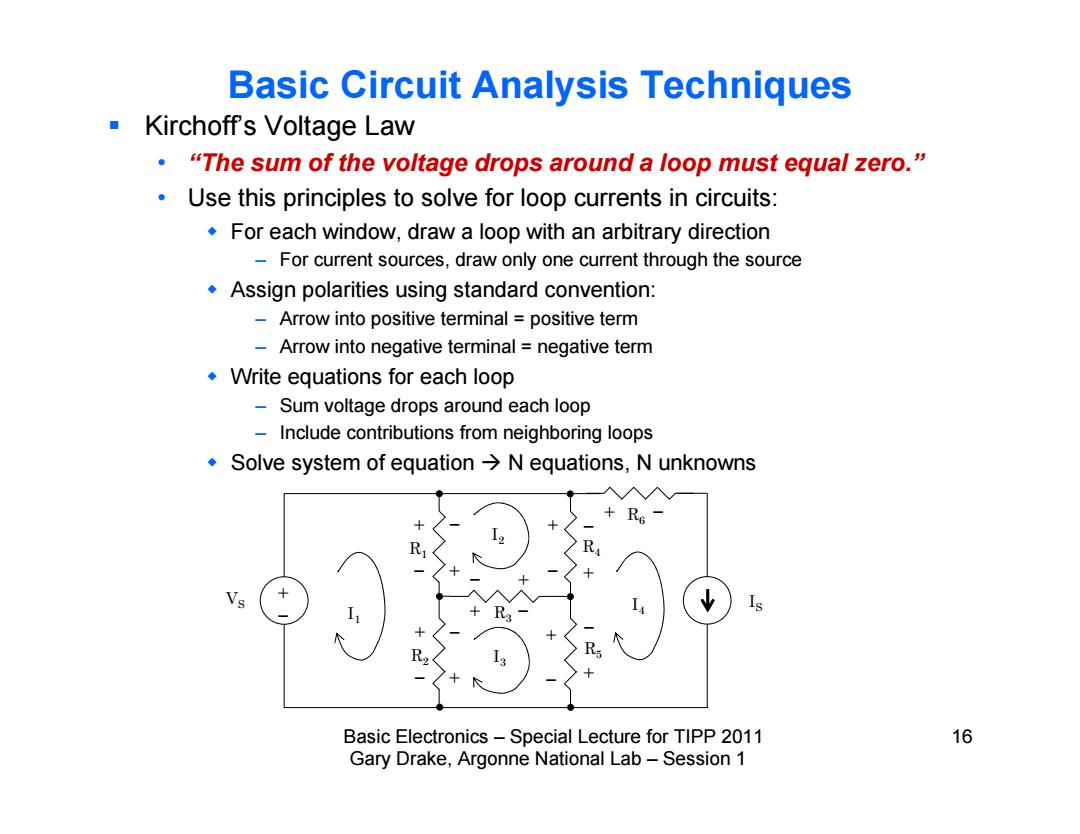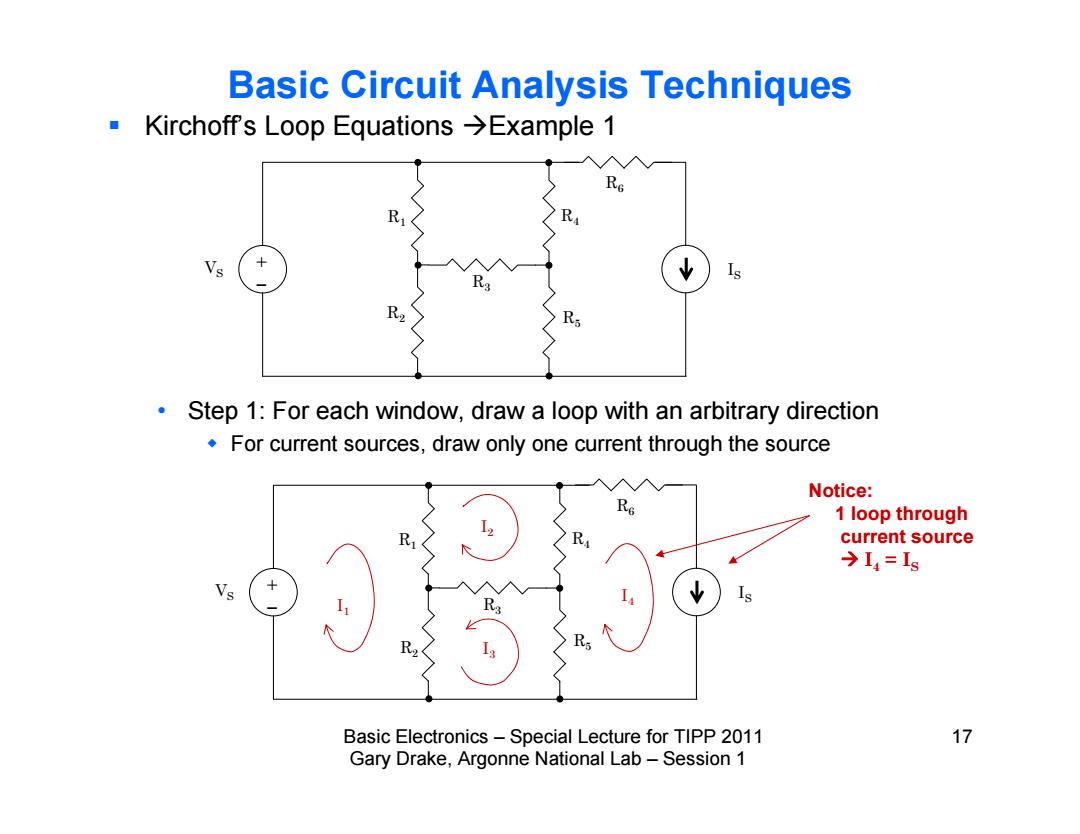
Basic Circuit Analysis Techniques ■Kirchoffs Voltage Law ·“The sum of the voltage drops around a loop must equal zero.” Use this principles to solve for loop currents in circuits: For each window,draw a loop with an arbitrary direction -For current sources,draw only one current through the source Assign polarities using standard convention: Arrow into positive terminal positive term -Arrow into negative terminal negative term Write equations for each loop Sum voltage drops around each loop Include contributions from neighboring loops Solve system of equation -N equations,N unknowns Is Basic Electronics-Special Lecture for TIPP 2011 16 Gary Drake,Argonne National Lab-Session 1
Basic Electronics – Special Lecture for TIPP 2011 16 Gary Drake, Argonne National Lab – Session 1 Basic Circuit Analysis Techniques Kirchoff’s Voltage Law • “The sum of the voltage drops around a loop must equal zero.” • Use this principles to solve for loop currents in circuits: For each window, draw a loop with an arbitrary direction – For current sources, draw only one current through the source Assign polarities using standard convention: – Arrow into positive terminal = positive term – Arrow into negative terminal = negative term Write equations for each loop – Sum voltage drops around each loop – Include contributions from neighboring loops Solve system of equation N equations, N unknowns R1 I1 I2 I3 I4 VS R4 R6 R5 R3 IS R2

Basic Circuit Analysis Techniques ■Kirchoff's Loop Equations→Example1 Vs Is R2 Step 1:For each window,draw a loop with an arbitrary direction For current sources,draw only one current through the source Notice: 1 loop through current source →14=Is Basic Electronics-Special Lecture for TIPP 2011 17 Gary Drake,Argonne National Lab-Session 1
Basic Electronics – Special Lecture for TIPP 2011 17 Gary Drake, Argonne National Lab – Session 1 Basic Circuit Analysis Techniques Kirchoff’s Loop Equations Example 1 • Step 1: For each window, draw a loop with an arbitrary direction For current sources, draw only one current through the source R1 VS R4 R6 R5 R3 IS R2 R1 I1 I2 I3 I4 VS R4 R6 R5 R3 IS R2 Notice: 1 loop through current source I4 = IS